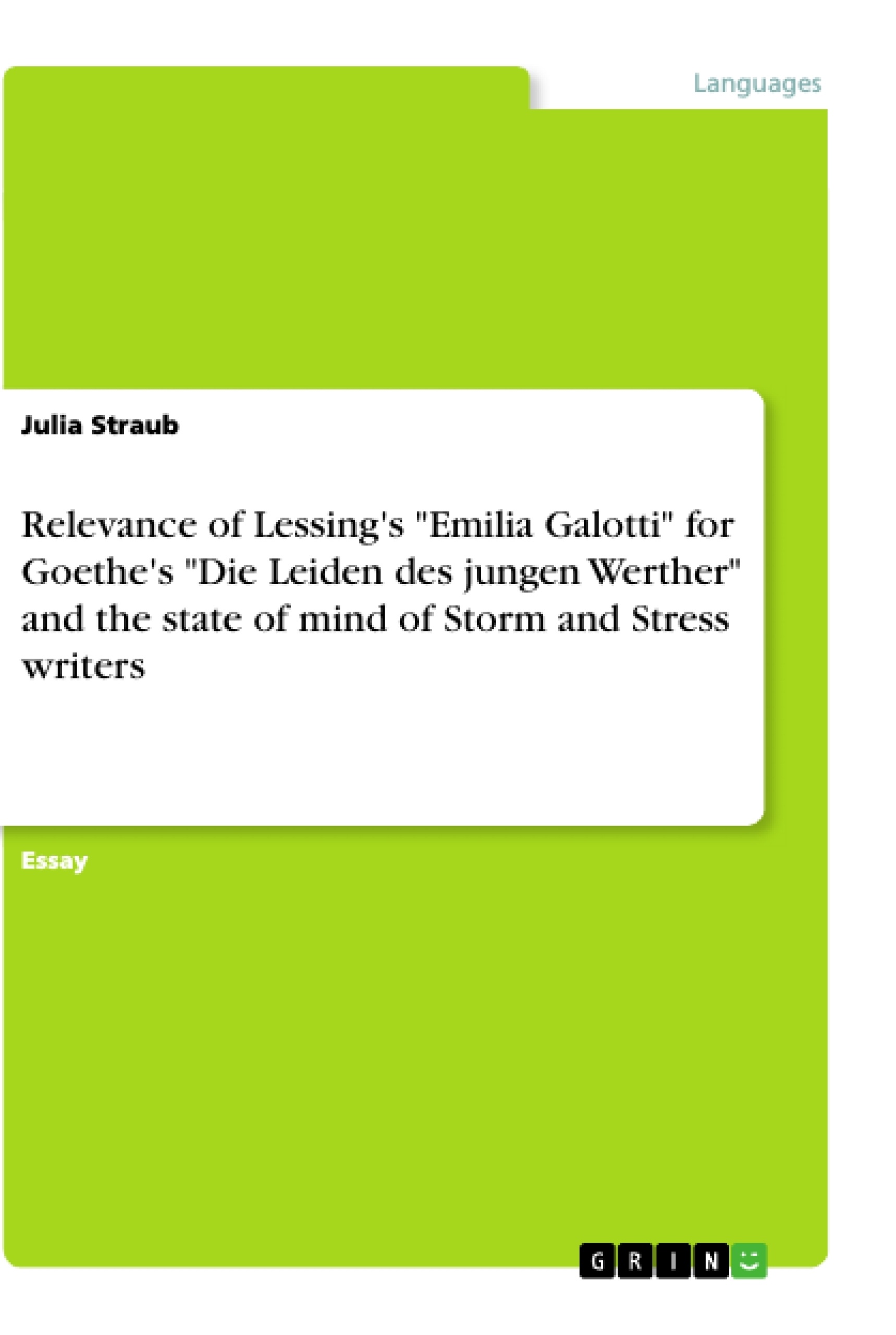“He had drunk only one glass of the wine. Emilia Galotti lay open on his desk” (Goethe 2004). When Werther commits suicide at the end of Goethe’s novel Die Leiden des jungen Werther, Lessing’s play Emilia Galotti lies next to him on his desk. The fact that it is opened, lets the reader assume that Werther had read the book, perhaps just moments before his suicide. It makes it seem of importance to Werther and it might have been relevant for his decision to commit suicide. But that is just one assumption which can be made. For the reader, it is interesting to know what Goethe wanted to tell us by including Lessing’s work in his novel. It does not seem much of a coincidence that Lessing’s work appears at the most important scene of the novel. This leads to the question this essay is concerned with. What is the relevance of Lessing’s play for Goethe’s novel? Did Lessing’s play influence Goethe or is he actually criticizing Lessing by including the play in his novel? And going even further: What is the relevance of the play for the state of mind of Storm and Stress writers/artists in general? There are several possible assumptions to those two questions so some of them will be presented and analysed in this essay although not all of them can be covered.
Inhaltsverzeichnis (Table of Contents)
- Introduction
- Relevance for Die Leiden des jungen Werther
- Relevance for the state of mind of Storm and Stress writers/artists
- Conclusion
Zielsetzung und Themenschwerpunkte (Objectives and Key Themes)
This essay aims to assess the relevance of Gotthold Ephraim Lessing's play Emilia Galotti for both Johann Wolfgang von Goethe's novel Die Leiden des jungen Werther and for the broader context of the Storm and Stress movement in German literature. The essay analyzes the play's presence in the final scene of Werther's suicide and explores its potential influence on the mindset of Storm and Stress writers and artists.
- The role of Emilia Galotti in shaping Werther's suicidal decision
- The potential influence of Lessing's play on the themes of love, guilt, and tragedy in Die Leiden des jungen Werther
- The connection between Emilia Galotti and the broader themes of the Storm and Stress movement
- The potential for Lessing's play to serve as a model or source of inspiration for Storm and Stress writers
- The symbolic significance of Werther's possession of Emilia Galotti at the moment of his death
Zusammenfassung der Kapitel (Chapter Summaries)
- Introduction: This chapter introduces the essay's topic, focusing on the significance of Emilia Galotti in the final scene of Die Leiden des jungen Werther and its potential connection to the Storm and Stress movement. It poses key questions about the relevance of Lessing's play for Goethe's novel and for the broader literary context.
- Relevance for Die Leiden des jungen Werther: This chapter delves into the relationship between Emilia Galotti and Die Leiden des jungen Werther, exploring the potential parallels between the protagonists' fates and the themes of guilt, love, and suicide. It examines different critical interpretations of the play's presence in Goethe's novel, including the possible influence of the real-life suicide of Karl Wilhelm Jerusalem, who also died with a copy of Emilia Galotti.
Schlüsselwörter (Keywords)
Key terms and concepts explored in this essay include Emilia Galotti, Die Leiden des jungen Werther, Storm and Stress, German literature, Enlightenment, Bürgerliches Trauerspiel, Briefroman, guilt, suicide, love, tragedy, and literary influence.
- Quote paper
- Julia Straub (Author), 2018, Relevance of Lessing's "Emilia Galotti" for Goethe's "Die Leiden des jungen Werther" and the state of mind of Storm and Stress writers, Munich, GRIN Verlag, https://www.grin.com/document/464331




